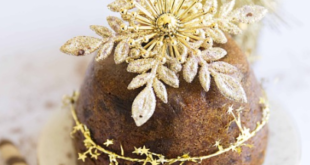As the temperature drops and the festive season envelops us in its cozy embrace, one drink rises to prominence as the ultimate winter warmer: mulled wine. This aromatic, spiced beverage has a long history and a timeless appeal, making it a staple of holiday celebrations worldwide. Whether you’re hosting a party, visiting a Christmas market, or simply enjoying a quiet evening at home, mulled wine is the perfect companion. Let’s explore its origins, variations, and how you can make it yourself.
The History of Mulled Wine
The origins of mulled wine trace back to ancient Rome, where spiced and heated wine, known as conditum paradoxum, was a popular way to preserve and enhance the flavor of leftover wine. As the Roman Empire expanded, so too did the love for this warming drink. By the Middle Ages, European countries adopted and adapted the recipe, infusing it with regional spices and herbs.
During the Victorian era, mulled wine gained a strong association with Christmas, thanks to its frequent mention in Charles Dickens’ works, such as “A Christmas Carol.” Today, it remains a beloved holiday tradition in countries like Germany (“Glühwien”), Sweden (“Glögg”), and the UK.
What Makes Mulled Wine Special?
Mulled wine is much more than spiced, heated wine. Its combination of warm flavors and inviting aroma transforms any gathering into a festive occasion. The key ingredients typically include:
- Red Wine: A medium-bodied or full-bodied red wine like Merlot, Zinfandel, or Cabernet Sauvignon works best.
- Spices: Traditional choices include cinnamon sticks, cloves, star anise, and nutmeg.
- Citrus: Orange slices or peels add brightness to the drink.
- Sweeteners: Sugar, honey, or maple syrup balance the spices and enhance the wine’s natural flavors.
- Optional Additions: Brandy, apple cider, or vanilla can add depth and complexity.
How to Make Mulled Wine at Home
Creating your own mulled wine is surprisingly simple and allows for customization based on your preferences. Here’s a classic recipe:
Ingredients:
- 1 bottle (750ml) red wine
- 1 orange (sliced, with peel on)
- 3 cinnamon sticks
- 4-5 whole cloves
- 2-3 star anise
- ¼ cup sugar or honey (adjust to taste)
- ¼ cup brandy (optional)
- Fresh cranberries or additional orange slices for garnish (optional)
Instructions:
- Pour the wine into a large pot or saucepan over low heat. Do not let it boil.
- Add the orange slices, spices, and sweetener. Stir gently.
- Simmer gently for 20-30 minutes, allowing the flavors to meld. Avoid boiling to preserve the alcohol content.
- Stir in the brandy, if using, and taste to adjust sweetness or spices.
- Strain the mulled wine into mugs or heatproof glasses, and garnish with cranberries, orange slices, or a cinnamon stick.
Variations to Try
While the classic recipe is a crowd-pleaser, there are numerous variations to suit every palate:
- White Mulled Wine: Use a dry white wine like Sauvignon Blanc, and pair with spices like cardamom and vanilla.
- Non-Alcoholic Mulled Cider: Substitute wine with apple cider and skip the brandy for a kid-friendly version.
- Berry Mulled Wine: Add a splash of cranberry juice or pomegranate juice for a fruity twist.
Perfect Pairings
Mulled wine pairs wonderfully with seasonal treats. Serve it alongside gingerbread cookies, roasted nuts, or savory appetizers like cheese platters. The spices in the wine enhance the flavors of sweet and savory snacks alike.
Mulled wine isn’t just a drink; it’s an experience. Its rich history, enticing aroma, and warming properties make it the epitome of holiday cheer. Whether you’re entertaining guests or enjoying a quiet night by the fire, a steaming mug of mulled wine is sure to lift your spirits and keep the cold at bay. Cheers to a festive season filled with warmth and good cheer!
 Vino-Club For Wine Lovers
Vino-Club For Wine Lovers







